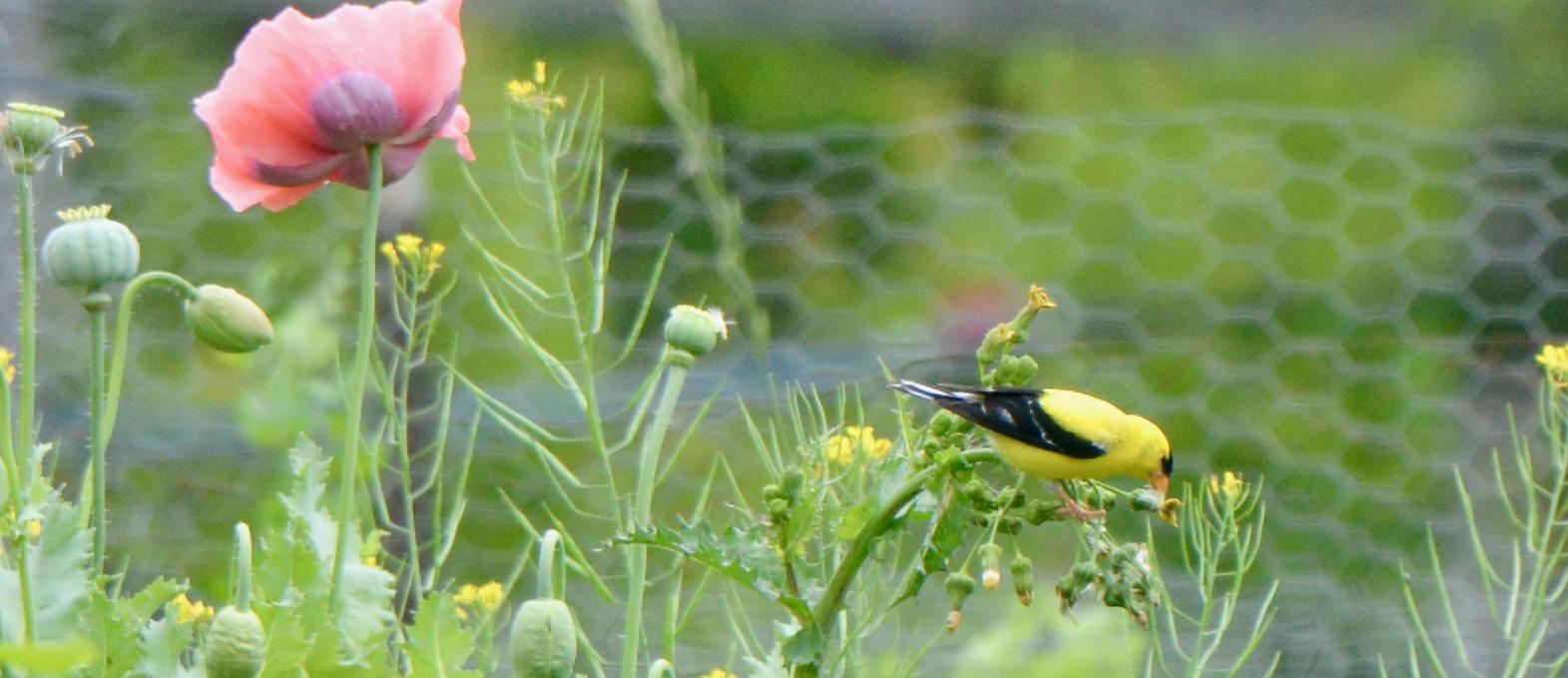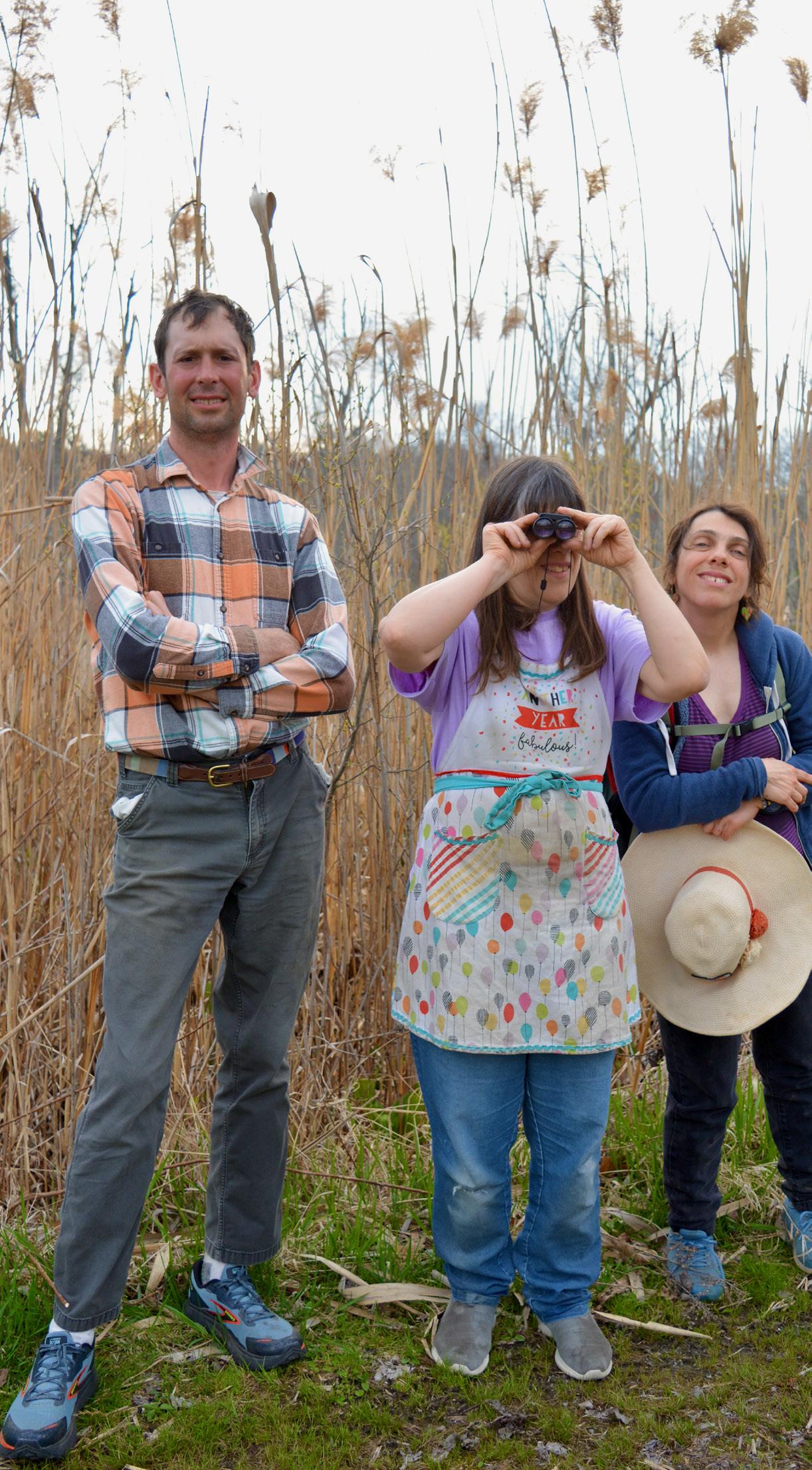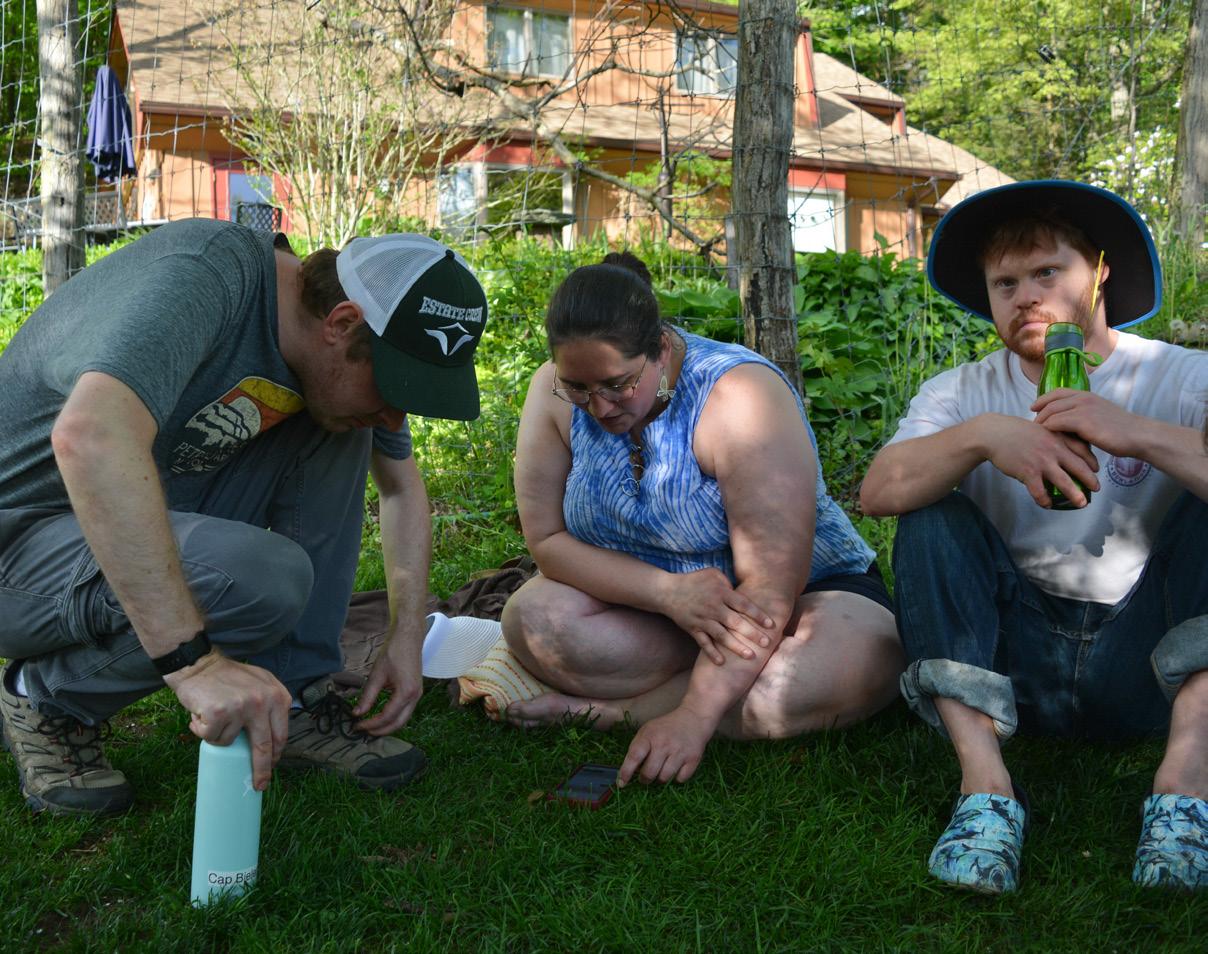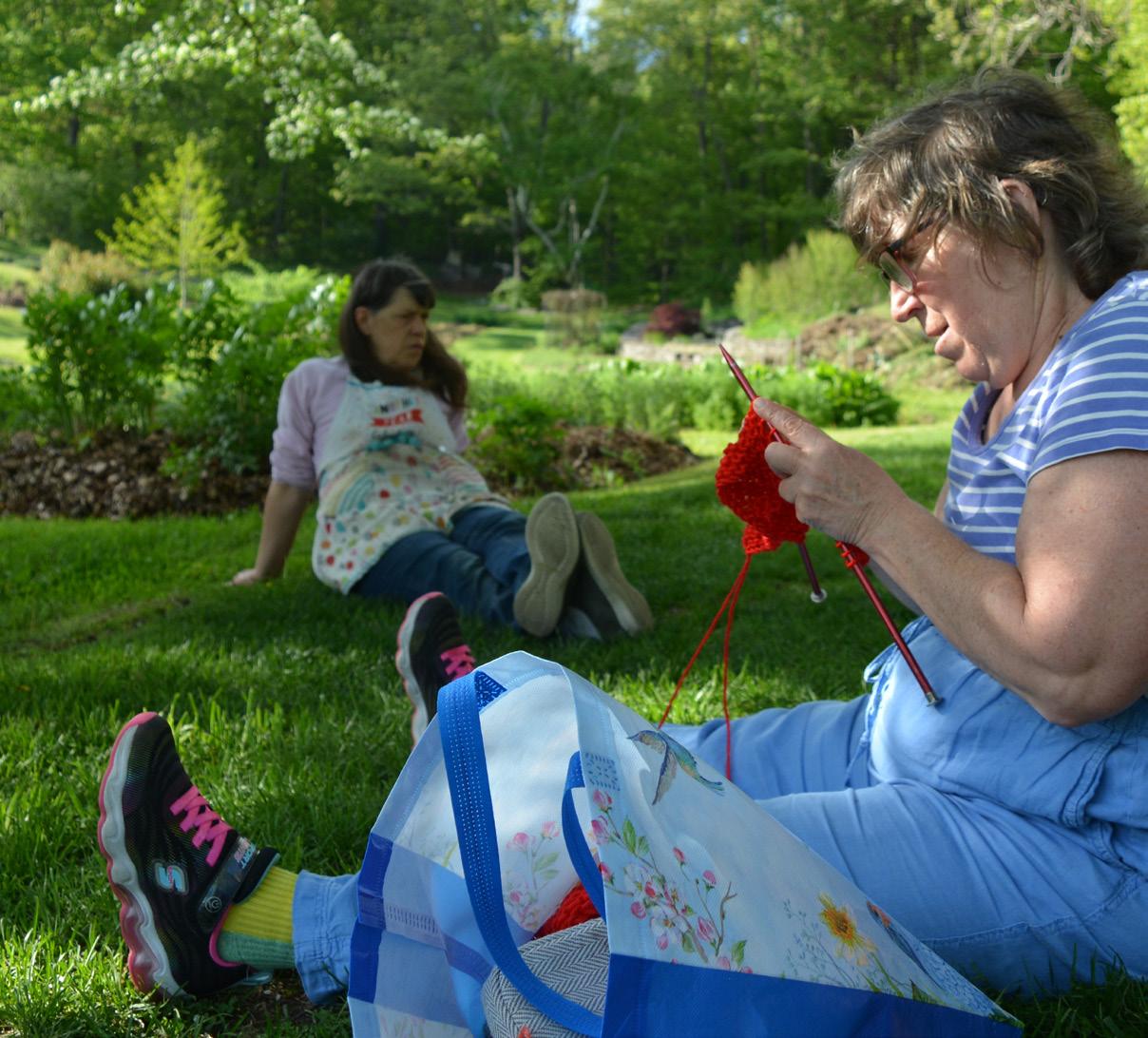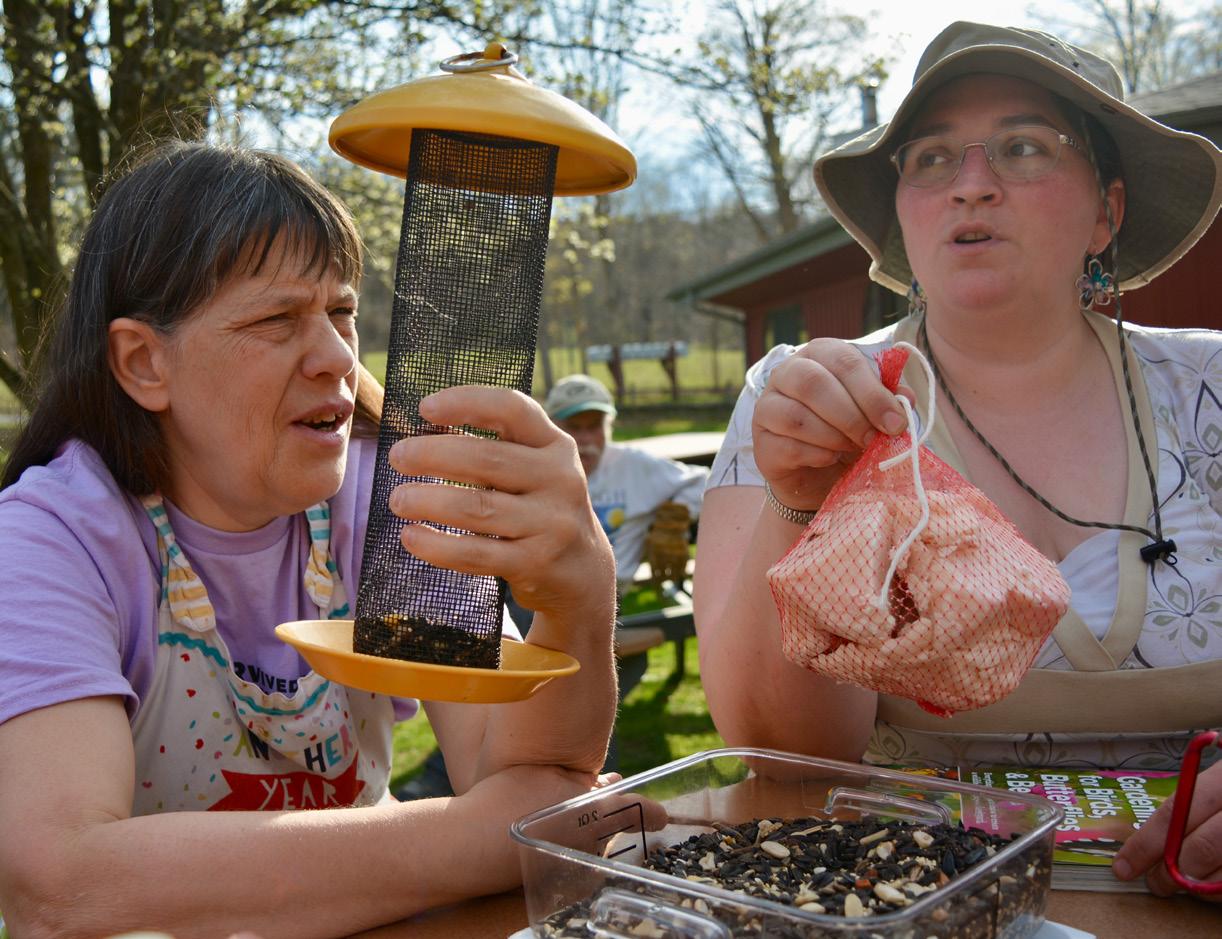
6 minute read
Flocking Together
Flocking Together: How Camphill’s resident bird lovers have been deepening their relationship with nature.
It’s 5:15 p.m. on a sunny Thursday in April, and we have an hour to spend exploring the grounds of Camphill Village before we need to be home for dinner. These Thursdays evenings are for the birds—as well as a group of our community members that have signed up to go birdwatching for the rest of the season.
Bug spray? Check. Binoculars? Check. Enthusiasm? Always.
“I’m glad I got this wish!” Marian Scharr exclaims while thumbing through a magazine featuring migratory birds—her attention darting from page to page. “There’s another new bird!”
This first gathering of birders is part of our Village “Community College,” which has been taking shape for a few years; our fellow community members who want to share their knowledge and expertise are welcome to organize a series of semester-based courses in the Village. This is house leader Sara White’s second semester imparting her birding passion across our community. Other courses offered this semester included bicycle repair, fairytales in eurythmy, and poetry.
We’re starting our birding course at the picnic tables outside of the Village Green, where Sara has displayed a collection of bird feeders and photographs for our lesson. She prompts us to identify the eating tendencies, habitats, and calls of birds in our region, and holds up a net full of white blocks that resemble cheese. “Does anyone know what this is for?”
Like so many awesome things we enjoy in our community, this bag of bird suet was made possible by Roger, our in-house butcher, who renders the fat from our livestock, and provides it to our households for this purpose.
After our discussion, it’s time to for a forest walk to our extraordinary wetlands, where birds, reptiles, and amphibians rule the roost. The vast beaver pond in Camphill Village is like something out of the mesozoic era: woodpeckers crawl up petrified swamp trees, algae-covered turtles sunbathe and fall off logs, and the dominant sounds of trickling water and bird calls are interrupted by the rustling tall grasses behind us. In every season, the beaver pond is very much alive.
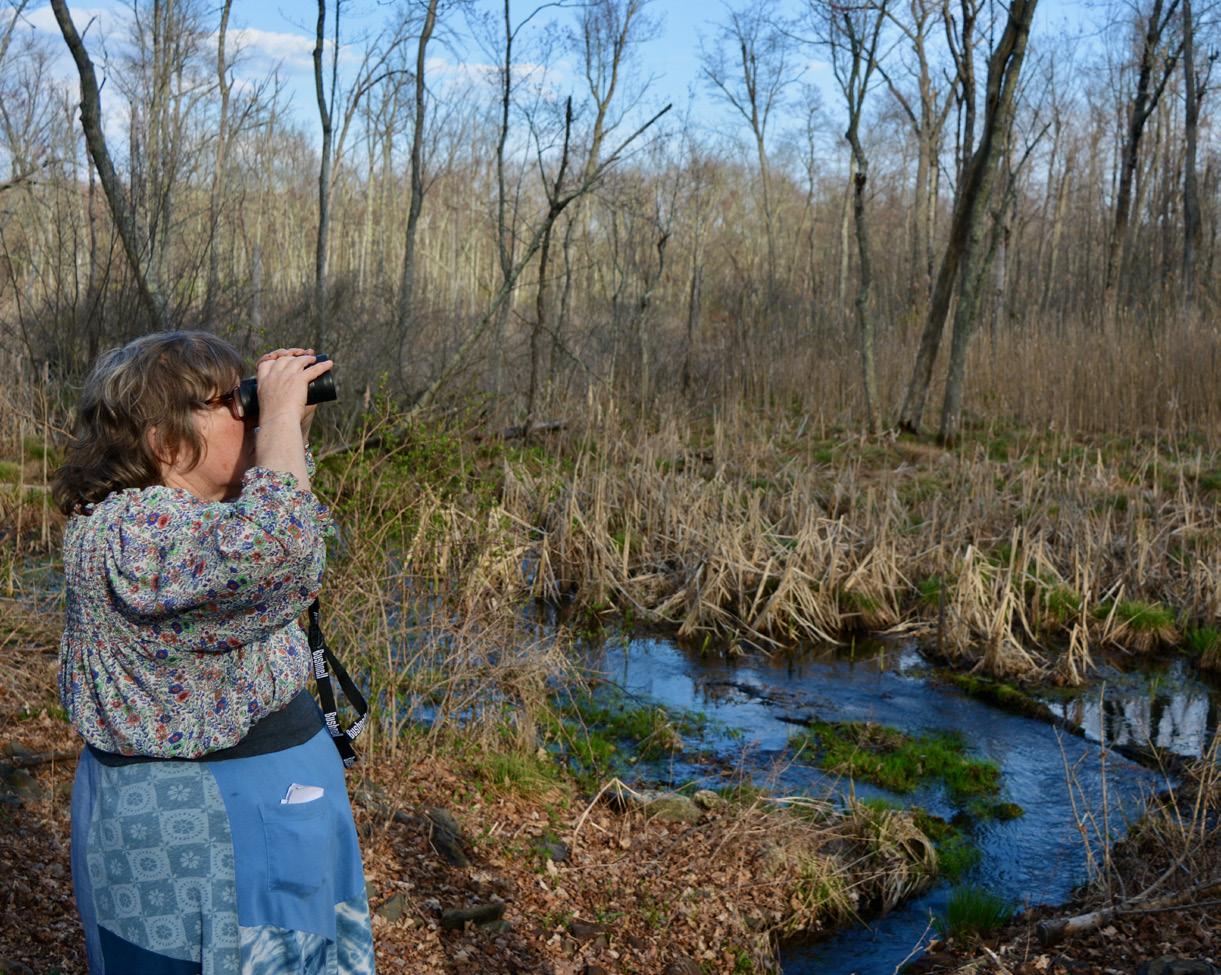
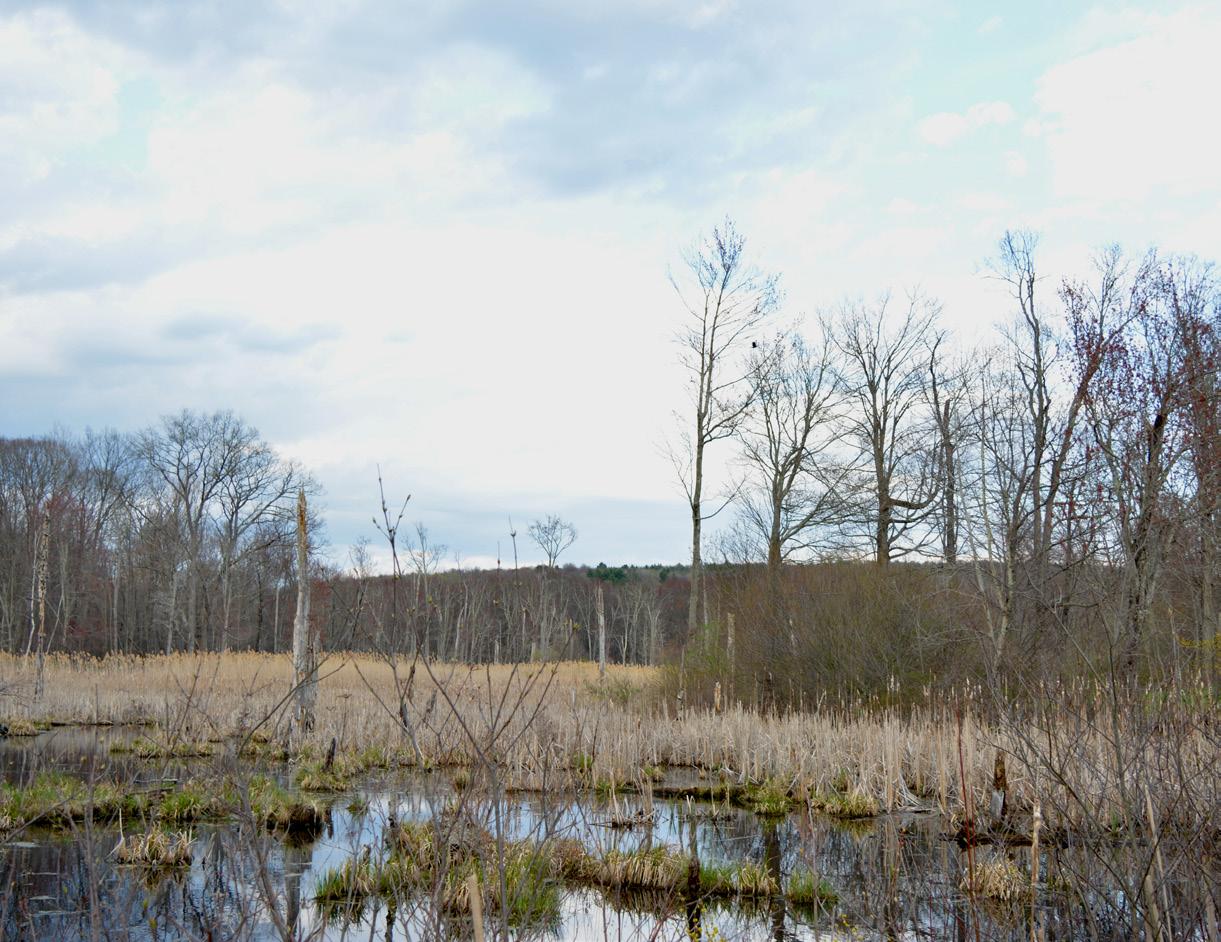
And even when things appear dead, they can be full of life. As we walk, Sara explains to our group that standing dead trees provide invaluable nesting real estate for owls, woodpeckers, and other birds—as well as for the insects and rodents they eat—and should be left in place when possible to support our feathered friends.
“Look at that one, guys!” Kim Warga has spotted a very cool tree. “They’re making holes!”
The group huddles around the tree to observe the different heights and sizes of the many cavities covering the trunk. Kim loves being outside and learning about nature. She was especially excited when Sara arranged for the Ravensbeard Wildlife Center to bring their rescued birds of prey to Camphill Village two years ago.

“I like hawks, owls, all different kinds of birds,” says Kim. “I love nature.”
We continue our walk. Red-winged blackbirds chirp and trill overhead and robins hop into the shade as we stroll with binoculars in ready position. Cap Bielenberg is hoping to see a Baltimore oriole or indigo bunting, two of his favorites. Cap has a knack for spotting both at different places in the Village, including the bird feeder outside of Arbutus House where he lives with Sara.
Cap finally sees an oriole on the second Thursday in May, when we gathered in the shade of the lush Healing Plant Garden. The garden is known for attracting birds and other pollinators to its vibrant flower and herb beds. And nectar-loving orioles are known to dine on bee balm, of which we have plenty. The wealth of biodiversity in Camphill Village is seemingly endless—from the delicate macroinvertebrates our environmental group surveys in our streams, to the milkweed-dependent monarch butterflies that accompany our sheep as they graze.
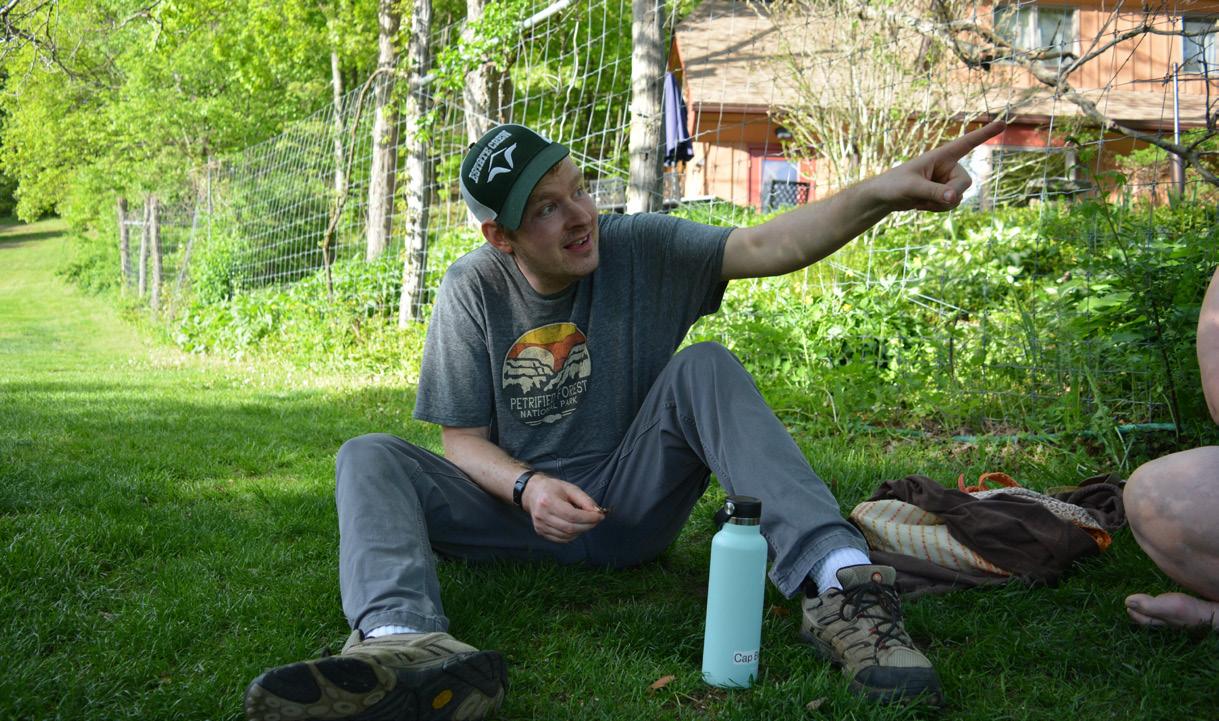
“Springtime is a great time to see the birds. They’re all migrating right now,” Sara says. “We’re actually in a great place because we do have our swamp—our wetland in the back—and we also have the open fields that have a lot of sparrows, and then we have our pond that has some wild Canadian geese there. So we’re really well off where a lot of our lands that we have here in Camphill Village have a lot of different environments that host a lot of birds.”
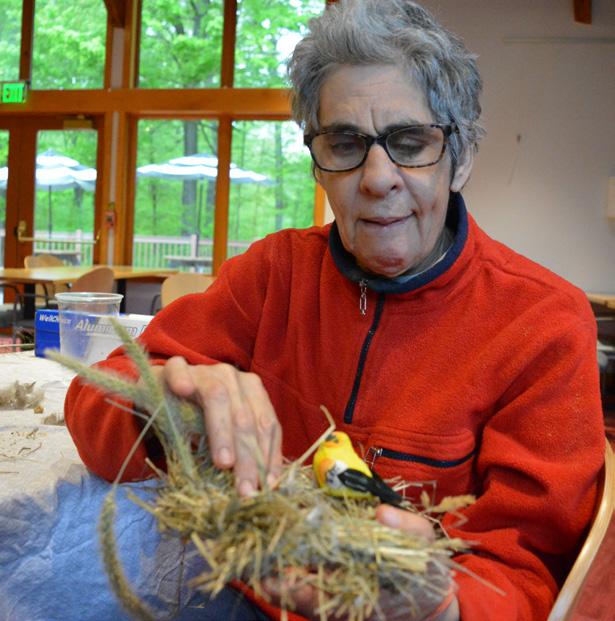
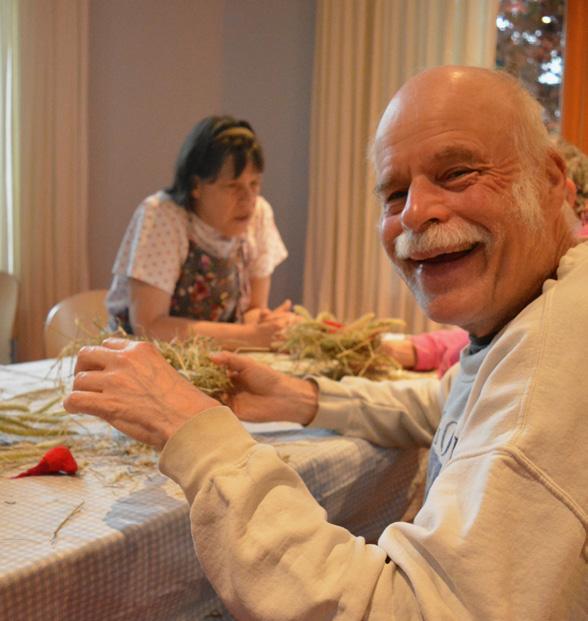

For the most part, the weather was excellent for our evening excursions. But we would have been drenched in early May if Sara hadn’t organized a backup plan: nest building in our Café. With feathers collected from our property, a ball of yarn, and hay from the resident guinea pigs of Arbutus House, we spent a productive hour building nests while Sara played bird documentary footage for us on her laptop.
“You need all the hay and all the sticks and then try to put it together like a bird, and it’s going to be difficult,” she said. “And that’s the challenge.”
The birdwatching course will end after the spring, and our “community college” courses are expected to pick back up in the fall.
A goldfinch enjoys some flowers in a Turtle Tree Seed garden.
